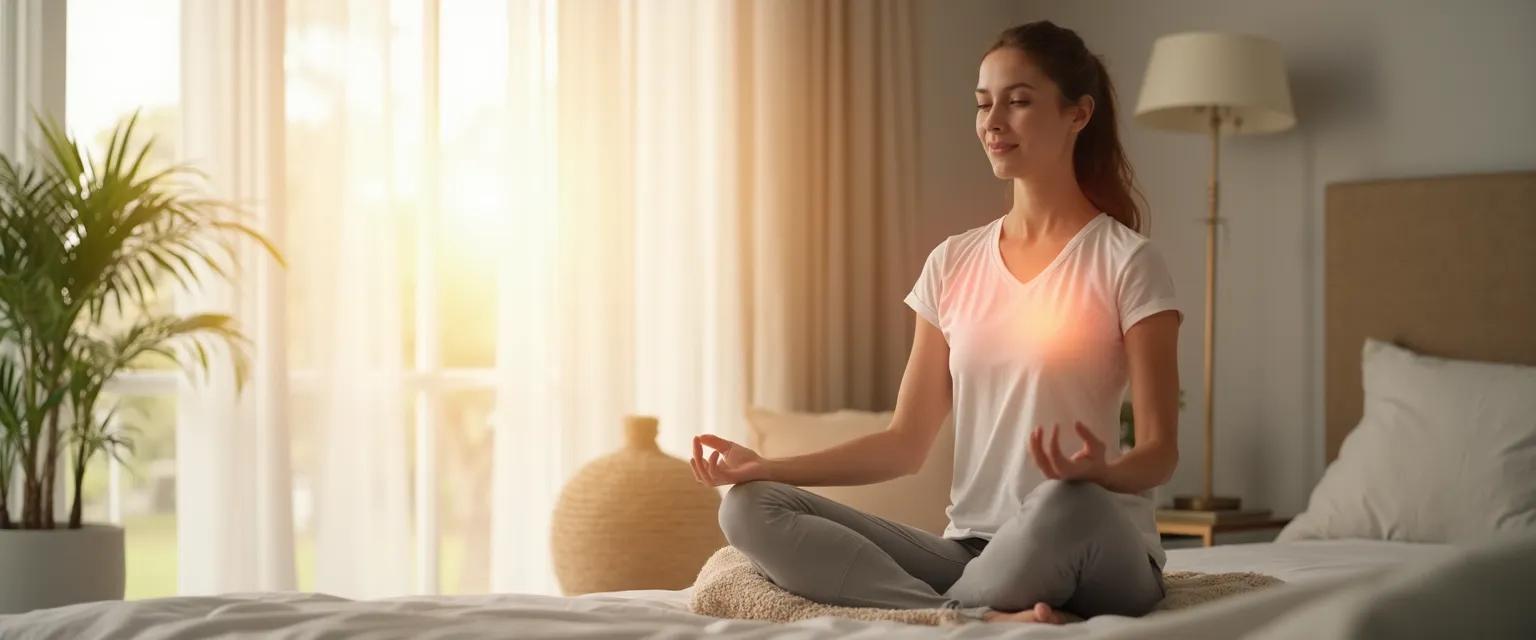Adapting Mark Williams' 10-Minute Sitting Meditation for Chronic Pain Relief
Living with chronic pain doesn't mean you have to miss out on the transformative benefits of mindfulness. The mark williams 10 min sitting meditation offers a powerful framework that can be adapted to work with—rather than against—your body's challenges. As the creator of Mindfulness-Based Cognitive Therapy (MBCT), Mark Williams designed this brief but impactful practice to help people develop present-moment awareness. With some thoughtful modifications, this meditation becomes not just accessible for those with chronic pain, but potentially a valuable tool in your pain management toolkit.
The beauty of the mark williams 10 min sitting meditation lies in its simplicity and flexibility. Research shows that even short mindfulness practices can activate the brain's pain modulation systems, potentially reducing the intensity of pain signals. These adaptations maintain the core principles that make the mark williams 10 min sitting meditation effective while creating space for your body's needs. Let's explore how to make this powerful anxiety management technique work for you, even on your most challenging days.
Core Elements of Mark Williams' 10-Minute Sitting Meditation for Pain Management
The original mark williams 10 min sitting meditation follows a simple structure that remains valuable for pain management. It begins with bringing awareness to the body as a whole, then narrows focus to the breath, before expanding awareness again to include the entire body. This creates a rhythm of attention that helps train the mind to stay present rather than getting caught in pain-related thought spirals.
When adapting the mark williams 10 min sitting meditation for pain, the body scan component requires special attention. Rather than trying to relax areas of pain (which can create frustration), simply acknowledge sensations with gentle curiosity. Notice the qualities of the pain—is it sharp, dull, throbbing, or burning? This mindfulness technique helps your brain process pain differently, potentially reducing its emotional impact.
The breath remains your anchor throughout the practice. When pain intensifies, you can always return to the sensation of breathing—a neutral point of focus. This creates a mental "rest stop" from pain without denying its existence. The mark williams 10 min sitting meditation technique emphasizes this gentle returning to the breath, which builds the mental muscle of redirecting attention—a crucial skill for chronic pain management.
Posture Modifications for Mark Williams' 10-Minute Sitting Meditation
The traditional mark williams 10 min sitting meditation posture—sitting upright on a chair or cushion—may need adjustment for those with pain. The key is finding a position that allows alertness without creating additional discomfort. Consider these options:
- A supportive chair with back support and cushions
- Lying down with knees bent and feet flat (if sitting increases pain)
- A reclined position with pillows supporting key areas
Props become essential allies in the mark williams 10 min sitting meditation posture for pain. Cushions under knees, rolled towels supporting the neck, or heating pads on painful areas can make the difference between an impossible practice and a sustainable one. Remember: adjusting your position during meditation isn't "cheating"—it's mindful self-care that honors your body's needs while maintaining the practice's integrity.
Practicing Mark Williams' 10-Minute Sitting Meditation with Pain as Your Teacher
The most transformative approach to the mark williams 10 min sitting meditation for chronic pain is viewing pain as a teacher rather than an enemy. This perspective shift opens the door to working with sensations instead of fighting against them. Try implementing the RAIN technique during your practice:
- Recognize the pain sensations as they arise
- Allow them to be present without trying to change them
- Investigate with gentle curiosity (location, intensity, qualities)
- Non-identification – recognize that you are not your pain
On particularly difficult days, consider shortening your mark williams 10 min sitting meditation to 5 minutes. Consistency matters more than duration. Even brief moments of mindful awareness build the neural pathways that help manage pain over time. The science of resilience shows that these small, consistent practices create meaningful change in how we experience challenges.
Remember that adapting the mark williams 10 min sitting meditation for chronic pain isn't about eliminating discomfort—it's about changing your relationship with it. Through regular practice, many find that while the physical sensations may remain, the suffering associated with them often diminishes. This subtle but profound shift makes the mark williams 10 min sitting meditation a valuable addition to any comprehensive pain management approach.




